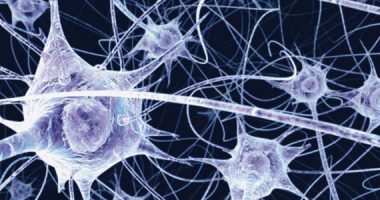
Artillery production, 1936 or 1937 | Harris & Ewing, Library of Congress | Public domain
Network, swarm and multitude are some of the different metaphors that have been used to understand the concept of collective intelligence. All of them have reflected our relationship with the Internet and its development. With the advent of AI, we wonder about other metaphors that might offer a new understanding of collective intelligence to address today’s environmental and socio-technical challenges.
The expansion of the Internet in the 1990s gave rise to great expectations about the emergence of a collective intelligence, something that Pierre Lévy defined as “a form of universally distributed intelligence, constantly enhanced, coordinated in real time, and resulting in the effective mobilization of skills”.[1] In Lévy’s vision, cyberspace plays a fundamental role as it enables dynamic interaction between different fields of knowledge and actors within a shared context. This relationship between collective intelligence and digital technologies has given rise to different models and morphologies which have varied over the past few decades. Firstly, with the emergence of ICTs, the prevalent metaphor was that of the network, with an emphasis on connectivity. Then, with a vision that was similarly cyber-utopian but less focused on the democratising potential of technology, the metaphor of the swarm or the hive came to the fore. Later still, with the emergence of new social and protest movements, the notion of the multitude gained momentum. In light of our current social and technical conditions, marked by the ubiquitous proliferation and integration of AI systems, it has become necessary to rethink the notion of collective intelligence and ask whether these metaphors are still relevant or whether there are others that we should now be using.
The idea of networks is still commonly employed today to describe the operation of information and communication technologies – or of the Internet, the network of networks – as a “series of interconnected nodes”. In the 1990s, Manuel Castells proposed taking this model as the basis for conceiving the social structure that was emerging thanks to these technologies, which he called the “network society”,[2] sparking widespread enthusiasm about the possibility that their expansion would lead to a dismantling of hierarchical structures in favour of decentralised social power. For others, it also provided the material basis for the emergence of a collective intelligence that would make it possible to put all of humanity’s cognitive resources to the service of addressing any challenge. In his book Connected Intelligence, Derrick de Kerckhove, following in the footsteps of Pierre Lévy, argued that “the Net … gives us access to a live, quasi-organic environment of millions of human intelligences perpetually at work on anything and everything with potential relevance to anyone and everybody.”[3] In his opinion, the interactivity, hypertextuality and connectivity that characterise networked technologies give rise to new cognitive habits that manifest themselves as connected imagination (making it possible to access the content of other people’s imagination and memory through a screen), emergent properties (the appearance of new types of intelligence arising from network connections) or distributed intelligence (thanks to which different individuals could work in together on various activities aligned under a single objective). The problem with this model is that it assumes the existence of individualised, self-enclosed nodes that are connected but not transformed by the connection, thus perpetuating an erroneous understanding of intelligence (as the disembodied mental activity of an autonomous subject) and of the collective (as a mass of individuals between whom there are ad hoc exchanges and voluntary agreements). The result of this is a lack of focus on the sensitive and corporeal dimension of networked, precarious and socially isolated cognitive work. As Franco ‘Bifo’ Berardi points out: “the social existence of cognitive workers cannot be reduced to intelligence: in their existential concreteness, the cognitarians are also body, in other words nerves that stiffen in the constant strain of attention, eyes that get tired staring at a screen. Collective intelligence neither reduces nor resolves the social existence of the bodies that produce this intelligence, the concrete bodies of the male and female cognitarians.”[4]
In a similar vein, Kevin Kelly proposed the metaphor of the “swarm” as the model for a collective intelligence that would take the form of a bionic hive-like supermind. Unlike the network model, computer technologies are not a means for allowing connection between different individual human intelligences, rather intelligence itself becomes artificial. As he explains in Out of Control, “A hive mind is a distributed memory that both perceives and remembers. It is possible that a human mind may be chiefly distributed, yet, it is in artificial minds where distributed mind will certainly prevail”.[5] For Kelly, swarm systems offer certain advantages such as flexibility (or the ability to adapt to new stimuli); resilience (or the ability to overcome failures); self-organisation (or the ability to generate spontaneous order from chaos); and novelty (or the ability to offer innumerable possibilities open to variability and imperfection). However, they are also inefficient, uncontrollable, unpredictable and incomprehensible; but, precisely because of this, they are much better at representing real-world complexity. For Kelly, “the marvel of ‘hive mind’ is that no one is in control, and yet an invisible hand governs, a hand that emerges from very dumb members”. This allusion to Adam Smith shows that the swarm model is actually based on the workings of the free market and the price system, meaning that not only does it reduce society to a collectivity of animals – with its fixed structure and caste division – but it is also explicitly aligned with the interests of capitalism. Franco ‘Bifo’ Berardi therefore interprets this swarm effect as the incorporation of automatisms into our nervous system and social life. Meanwhile, in his book You Are Not a Gadget, Jaron Lanier warns of the danger of such ideas about the autonomy of the hive mind in terms of zombification, as they favour subjectivity without interiority.[6]
Another model for thinking about collective intelligence is that of Howard Rheingold’s “smart mobs”, which “consist of people who are able to act in concert even if they don’t know each other” thanks to “ both communication and computing capabilities” that “help people coordinate actions with others around the world – and, perhaps more importantly, with people nearby”, thus gaining “new forms of social power, new ways to organize their interactions and exchanges just in time and just in place”.[7] However, Rheingold is realistic about the flipside when he anticipates many of the harmful applications of these technologies, which can be used as a weapon of surveillance and control by corporations and states or employed by lynch mobs. In any case, the emphasis on their potential for social change comes from the fact that this metaphor emerged at a historical moment marked by the crisis of the new Internet economy and the anti-globalisation movement, theorised by Michael Hardt and Antonio Negri around the concept of the “multitude”. While this image is useful when it comes to activating constituent processes, it is not as efficient when it comes to generating political decision-making and sustained governance. As Eugene Thacker says: “the multitude’s self-organization does not automatically imply self-governance”.[8] The reasons for this lie in the concept’s paradoxical definition: a multiplicity of singularities, a difference that is repetition, an expansion that is also contraction… Furthermore, although the critical use of the mass organisational capacities offered by digital networks and platforms has enabled movements such as 15M, #BlackLivesMatter and #MeToo, phenomena such as the proliferation of fake news, the use of trolls and bots in political marketing, or echo chambers and the resulting polarisation create the least favourable conditions for the emergence of a collective intelligence.
Now that we have reviewed the different ways of understanding the morphology of collective intelligence, we must ask ourselves whether we need another metaphor that is not conjugated with abstract and individualised terms such as network, that does not reflect an automated and naturalised vision of society as the swarm, and that does not express itself in paradoxical terms such as the multitude. In this sense, Katherine N. Hayles’ notion of the “assemblage” overcomes some of these limitations. Although this concept has been theorised before by Deleuze and Guattari as well as Manuel DeLanda, her approach bestows the concept with different characteristics to those of these authors and is particularly and specifically linked to an expanded notion of cognition.
In contrast to the notion of a network, the elements that make up an assemblage are modified by the type of exchange that takes place between them. Taking cognitive biology as her starting point, Hayles conceives of assemblages as part of the materialised context of the (embodied) elements that compose them, elements which mutually influence each other, involving internal changes and restructuring on the basis of the specific dynamics and temporalities of these interactions in each of the elements. Hayles mentions, for example, the neurological changes that occur in human brains as a result of intense interactions with digital media. On the other hand, the structure of an assemblage does not consist of stably defined connections like those of a network, but neither is it completely unstable like swarms, rather it shifts into different configurations depending on how it is updated over time. As the author says: “the configurations in which systems operate are always in transition, constantly adding and dropping components and rearranging connections”.[9]
However, despite its capacity for mutation and variation, the morphology of the cognitive assemblage is not open to paradoxical definitions that give rise to political relativism, rather it attempts to differentiate the different modes of cognition that compose it and their respective capacity for action, as well as their potential functions and responsibilities. A cognitive assemblage may comprise conscious modes of cognition such as that of humans, as well as non-conscious cognitions such as those of animals, plants and certain technical systems. The condition for being part of this layer of cognition is that, in their interaction with the environment, these “cognizers” are able to interpret information and make choices. Finally, there are material processes, which are not cognitive in themselves but can be used as a basis for cognitive processes. According to Hayles, within an assemblage, the cognizers (both conscious and non-conscious) are “actors”, insofar as they have the capacity to make decisions, some on the basis of choice or free will, others through mere interpretation of information and the choice of alternative paths of action. Material processes, on the other hand, are only agents, insofar as they can only intervene in the capacity for action through external conditioning.
Understanding collective intelligence as an assemblage then allows for the inclusion of different human and technological agents and overcomes the anthropocentrism of other models based on human will, whether extended (as in the multitude) or supressed (as in the swarm). In this way, ethical decision-making and responsibility are distributed among different cognitive actors with the capacity to choose and interpret, and to the extent that they make decisions – albeit algorithmic ones – they are also accountable. This is especially important in the context of the current climate crisis, where material processes (tsunamis, global warming, tornadoes, floods) unleash their often-destructive agency on human and non-human forms of life. It also points to the proliferation of AI systems applied to automated decision-making – currently used for personnel management, credit risk prediction and social services – or biometric control for police and military purposes – for example, border control – that allow companies and states to take ethical distance and evade accountability through the replacement of humans by algorithms. Therefore, identifying these processes and systems as part of an assemblage – giving weight to the possibilities of choice and decision – is crucial at the political level.
With regard to the authorship of Alejandra López Gabrielidis, this article has been written with the support of the Irla Postdoctoral Fellowship 2022-2023.
[1] Lévy, P. (1997). Collective Intelligence: Mankind’s Emerging World in Cyberspace. New York: Perseus Books.
[2] Castells, M. (1996). The information Age. Vol. 1: The Rise of the Network Society. Oxford: Blackwell.
[3] Kerckhove, D. (1998). Connected Intelligence: The Arrival of the Web Society. London: Kogan Page.
[4] Berardi, F. (2003). La fábrica de la infelicidad. Nuevas formas de trabajo y movimiento global. Madrid: Traficantes de Sueños.
[5] Kelly, K. (1994). Out of Control. The New Biology of Machines, Social Systems and the Economic World. New York: Perseus Books.
[6] Lanier, J. (2010). You Are Not a Gadget. New York: Alfred A. Knopf
[7] Rheingold, H. (2002). Smart Mobs. The Next Social Revolution. New York: Basic Books.
[8] Thacker, E. (2004). Networks, Swarms, Multitudes. CTheory a142a.
[9] Hayles, K. N. (2017). Unthought. The Power of the Cognitive Nonconscious. Chicago: University of Chicago Press.






Leave a comment